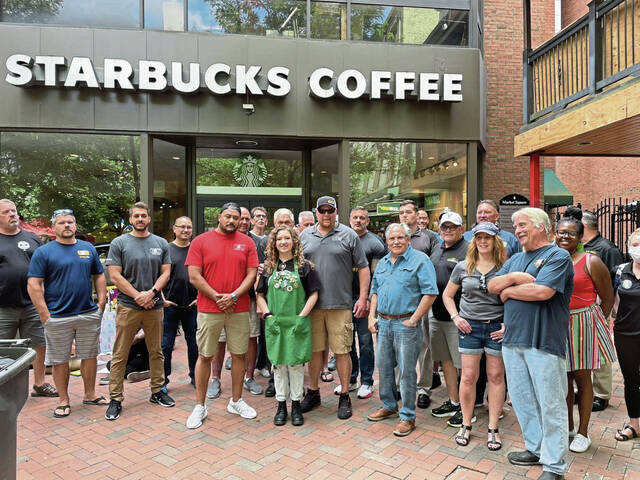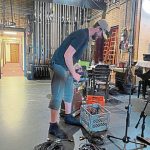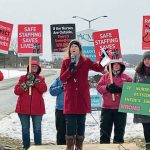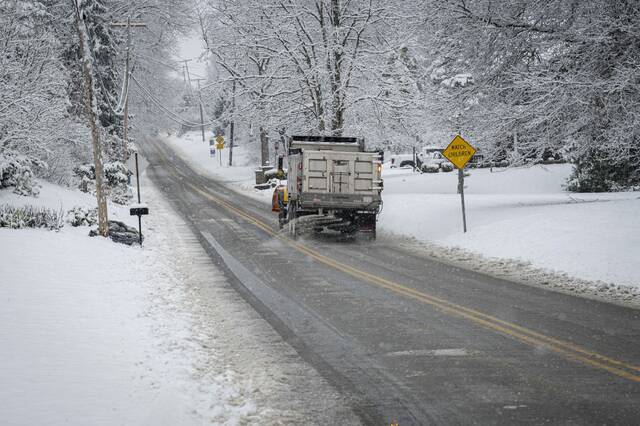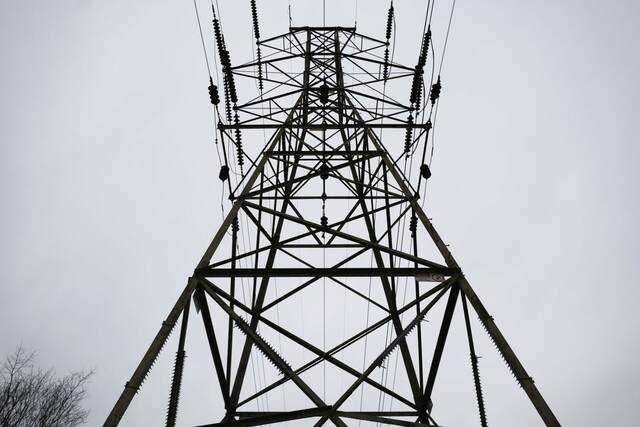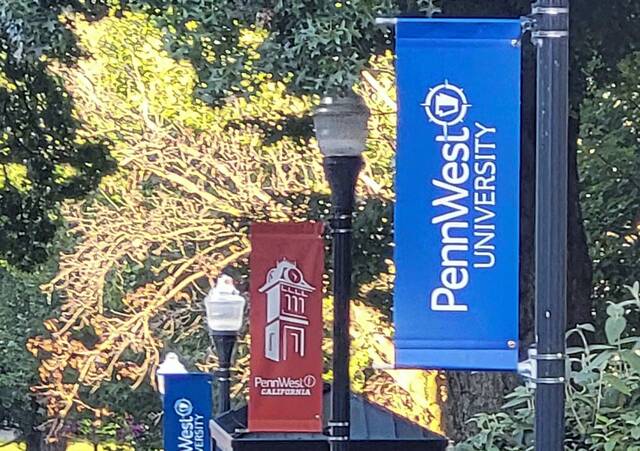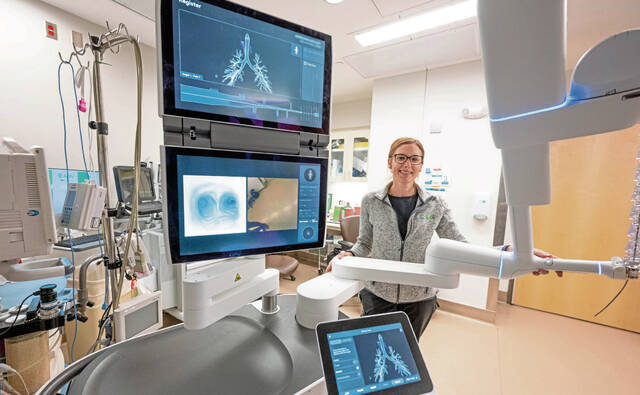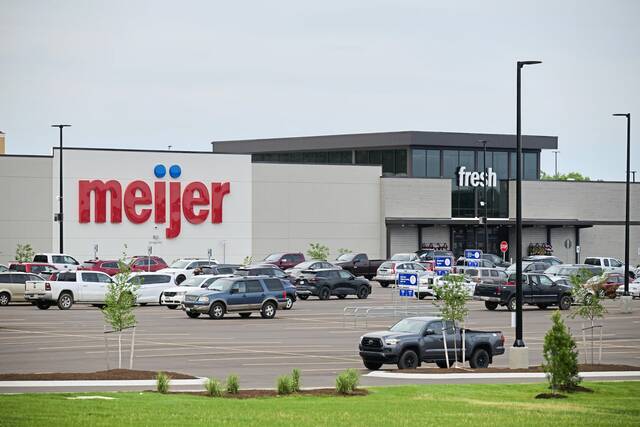Labor leaders are trumpeting a resurgence in the interest to unionize that they say hasn’t been seen in decades while businesses grapple with a shrinking labor market and other pressures.
“We’re seeing more organizing than in years,” said Paul Clark, a professor in Penn State’s School of Labor and Employment Relations. “It’s an unusual confluence of factors that has created this environment for organizing.”
New petitions filed by workers to form or join a union jumped 58% nationwide from October 2021 to June 2022 compared with the same months in 2020-21, according to the National Labor Relations Board. The NLRB’s Pittsburgh office, covering the southwestern part of the state, recorded 34 petitions for new unions this year through August, besting 2021’s total of 32 for the year.
Although there was an uptick in the number of petitions to organize new workplaces, the number of unionized workers remains on the decline over the past decade. Unions represent a smaller share of Pennsylvania’s workforce, shrinking from 15.8% of workers in 2011 to 13.6% in 2021, according to the U.S. Bureau of Labor Statistics.
Changing unions
It’s not just the volume of petitions that’s changing. More young workers in white-collar jobs are seeking union representation, according to United Steelworkers International and other unions. Many work in industries not previously associated with unions.
People like Tori Tambellini.
The 23-year-old from downtown Pittsburgh doesn’t work in a steel mill, classroom or truck cab. She makes coffee — rather, she did.
Tambellini helped to organize fellow employees at Starbucks in Pittsburgh’s Station Square. The former barista and shift supervisor helped make that shop one of 11 Starbucks in the region to unionize, with the Teamsters Local 30 union organizing one in Hempfield.
She said the pandemic drove home the need for union representation.
“It really highlighted how much Starbucks valued profits more than anything else and sees us as a number,” she said. “I wanted to work at Starbucks because it claimed to be progressive company, a nice place to work for. But during the pandemic, it hit us how it’s just an image thing. It’s all talk.”
One of the last straws for Tambellini was when she learned Starbucks interim CEO Kevin Johnson received a nearly 40% increase in total compensation for 2021, raising his total to $20.4 million, at a time when employees were getting raises of 10 cents an hour, she said.
Tambellini complained of other issues such as loss of pandemic benefits and reduced hours. She worked for the coffeemaker for 2½ years, making $12.30 an hour and later $16.34 an hour as a shift supervisor. She said her full-time hours were knocked down to just 17 before she lost her job July 13.
Tambellini claimed she was fired after arriving from a trip to help with labor organizing at another Starbucks.
Her union, and now her new employer, Workers United, filed unfair labor practices complaints with the NLRB for nine workers at Pittsburgh-area Starbucks shops. The union claims they were fired as retaliation for their union activities.
A Starbucks spokesperson on Friday said the company will respect NLRB’s process and will bargain in good faith with stores represented by Workers United.
“The allegations of retaliation are false,” the Starbucks spokesperson said. Workers, whether in a union or not, are required to comply with company standards, policies, and procedures. “Our partners are aware that failing to uphold these standards can result in separation,” the company said.
Tambellini is just one example of younger workers embracing union values normally associated with their parents.
Younger workers are looking at employment differently these days, said Clark and Tom Conway, president of the United Steelworkers, agrees.
“They don’t want to work 65 to 70 hours a week,” Conway said. “They want some quality of life, and that is different from what we saw in the Baby Boomers, who worked a lot of overtime.”
Social media is fueling and creating a forum for workers to learn and talk about work. “The rise of social media has provided the ability for people to talk across lines that they couldn’t before,” Conway said.
“That medium creates ideas and moves ideas,” he said, adding USW uses social media to organize and get messages out. While social media can be misused, Conway said, “there’s a lot of strength and power in it, and it has tremendous possibilities.”
Workplaces like an Amazon warehouse in New York, Trader Joe’s supermarkets — even Apple — are seeing their workers attempt to unionize.
“Generations are standing up for themselves more or differently. They are not as afraid to change,” said Tammy May of Renfrew, a registered nurse at Butler Memorial Hospital and president of the Butler chapter of the Pennsylvania Association of Staff Nurses and Allied Professionals, and a board member at large for the statewide union.
Radio station workers at WESA and WYEP in Pittsburgh last week declared their intent to unionize and have asked management to recognize them without an election.
In an era of “quiet quitting” and the “great resignation,” some non-unionized workers are frustrated with employers piling on work without additional pay and a paycheck that hasn’t kept up with inflation. A recent Gallup Poll showed 71% of workers approve of unions, the highest approval rating since 1965.
“It’s because maybe workers are realizing that they need a voice in the workplace,” said Harriett Ellenberger, longtime labor activist and treasurer of the Greater Westmoreland County Labor Council.
“The most successful organizing campaigns are driven by the workers who will benefit from union membership. When Pennsylvania State Education Association organizes a new workplace, the campaign is led by employees, with PSEA leaders and staff providing valuable support and guidance,” said Chis Lilienthal, a spokesman for the state’s teachers union.
The teachers’ union over the past decade expanded its organizing efforts from public schools to eight privately owned charter and cyber schools, Lilienthal said. The union represents about 1,000 cyber charter and charter school employees statewide, whose employees have the common theme concerning the need for transparency and accountability.
The United Steelworkers, with about 850,000 active and retired members, has been in the headlines for organizing unions at the Carnegie Museums and Carnegie Library and the University of Pittsburgh faculty.
“These workers are saying, ‘My job here is important to this enterprise,’” Conway said. “We’re seeing an uprising of these cultural workers.”
Tough for businesses
This unionization push comes at a challenging time for businesses, with a shrinking labor market that is driving up wages, inflation pressure and supply chain disruptions, said Alex Halper, director of government affairs for the Pennsylvania Chamber of Business and Industry, the state’s largest business organization with close to 10,000 members.
The Pittsburgh region’s civilian labor force has yet to recover from the loss of workers since February 2020, the month before the coronavirus prompted business shutdowns and layoffs.
According to data from the state Center for Workforce Information and Analysis, the region’s workforce — those working or actively looking for work — shrank from about 1.22 million in February 2020 to about 1.19 million in July.
With a shortage of workers, those engaging in labor union activity do not have to fear that losing a job means long-term unemployment. “They can easily go out and find another one,” Clark said.
Whether that advantage remains is unknown.
“With a tight labor market, wages are going up. It’s a buyer’s market” said Jim Futrell, vice president for market research and analysis at the Allegheny Conference on Community Development, a Pittsburgh-based economic development organization.
As the nation pulls out of the pandemic, Futrell said he thinks the region will see a more typical pattern of fluctuations in the labor market with seasonal changes. The labor market has recovered to roughly 96% of its pre-pandemic level, Futrell said, although staffing shortages remain in the health care sector and social work.
As unions broaden their efforts to organize sectors of the economy that had been traditionally non-union, businesses are at a disadvantage, Halper said. Federal labor laws restrict what employers can do in terms of communicating with its workers during an organizing drive.
“It’s an already an uneven playing field. The Biden administration is definitely trying to make it even more uneven,” Halper said.
Clark described the Biden administration as “the most pro-union administration in Washington since FDR (Franklin Delano Roosevelt).” President Joe Biden has appointed two pro-labor members to the NLRB and removed former President Donald Trump’s general counsel to the labor board and replaced him with a pro-labor general counsel.
“It’s partially the political climate,” Ellenberger said.
Big pay raises
For some union workers, pay increases have hit historic levels.
The United Steelworkers recently reached a tentative four-year agreement with Cleveland-Cliffs Inc. that will provide the company’s 12,000 steelworkers at 14 plants in six states an 8% pay raise in the first year, followed by annual increases of 4% for the remaining three years. The Pittsburgh-based union said that’s the highest pay raise its members have won in negotiations since at least 1971.
Two unions representing nurses and technicians for ACMH Hospital in East Franklin, Armstrong County, also just landed a 15% to 23% pay increase for a three-year contract.
The Pennsylvania Association of Staff Nurses and Allied Professionals continues to negotiate contracts with large pay increases for nurses.
One nurses’ union in the northeastern part of the state landed an 18% wage increase, said May of Butler Memorial Hospital.
Availability of other nursing jobs with better hours outside of the hospital setting has fueled the nursing shortage in recent years, she said. Schools, along with insurance, pharmaceutical and manufacturing companies, offer jobs with good pay and better hours.
“The field is so competitive and these opportunities have only expanded in the last 30 years,” May said. “It’s hard to keep staff in hospital bedside positions when there are other positions that are Mondays through Fridays and you are not on call or working weekends and holidays. It’s a better work-life balance.”
The covid trigger
Covid-19 was the real spark that ignited union interest, said Steve Catanese, president of SEIU Local 668, representing nearly 20,000 workers in Pennsylvania, including state, county and local government as well as businesses.
“A lot of people from the outside are seeing the union shops have some voice, speaking out against covid-19 conditions and the need for mitigation,” he said. “You quit or figure out how to change things in the workplace.”
Workers who were on the front lines during the pandemic, who were exposed while working, “saw the power of unions more evident for their health and safety and their pay,” said Pennsylvania AFL-CIO President Angela Ferritto.
While unions are winning pay increases in collective bargaining and the gains are guaranteed in the contract, Ferritto said, that’s just one facet of what unions can do. Workers want to join unions for what organized labor traditionally does — focus on health and safety in addition to pay, she said.
But, the chamber’s Halper said that employers are restricted by federal labor law how they can communicate their side of the story during an organizing drive and what actions they can take.
“The field is already uneven (for businesses). The Biden administration has tilted it even more,” Halper said.



